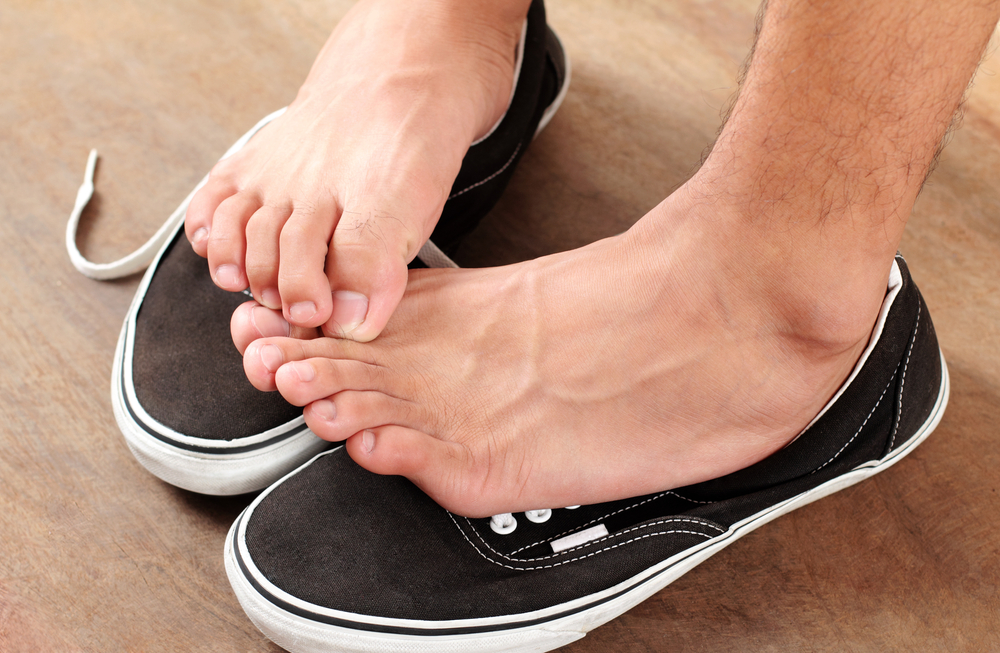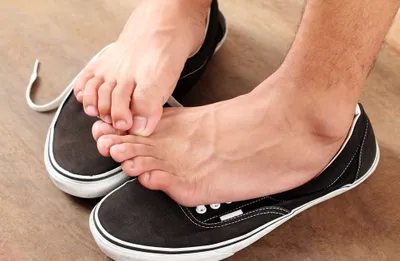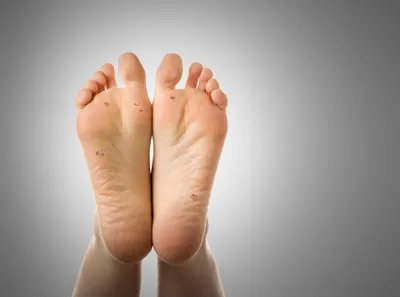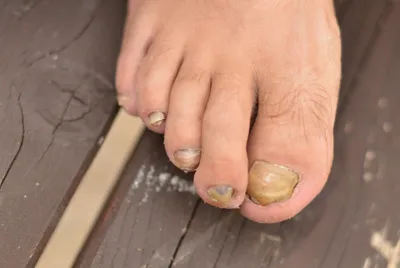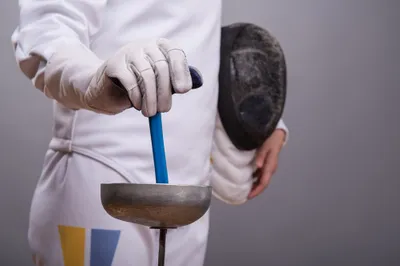Sure, the motivation might be contagious in the locker room of your local gym or recreational center, but, shockingly, so are numerous other icky bacterial infections that can spread quickly in moist, hot environments among gym-goers and athletes who share surfaces, towels, and athletic equipment.
Don’t be scared of the locker room—just be proactive when it comes to guarding your body against the eight various plantar warts, fungal infections, and rashes that are likely lurking in your workout space…
1.Athlete’s Foot
Athlete’s foot doesn’t mean you develop super fast pacing or super wide stride when it comes to running. No, athlete’s foot is due to tinea fungi that tend to take up residence on warm, moist locker room floors and cling to your feet, causing a condition known as tinea pedis (or athlete’s foot).
If you frequent gym locker rooms and like to walk around in your bare feet, you might develop the condition that results in scaly, cracked skin that itches and burns. Athlete’s foot tends to crop up first between the toe webbing. To protect yourself, don a pair of water resistant flip-flops for trips to the steam room and taking showers. Also, make sure to dry your feet thoroughly and change to clean, dry socks before leaving the gym.
2. Plantar Warts
I’ve been the lucky recipient of a nasty plantar wart—unbeknownst to me at the time, they are the result of a virus that causes a wart to take deep root in the soles or balls of the feet. Each wart is made up of dark spots the size of a pin head (these are actually damaged blood vessels). This location is common for them to take root due to the excess pressure on certain parts of the foot that causes the wart to flatten out completely.
However, plantar warts are difficult to get rid of and they stay with you for a very long time—trust me. Not to mention that plantar warts can stall your workout efforts as they make it very painful to run, walk, or stand for long periods of time. To protect your tootsies from plantar warts, don’t walk around in bare feet in the locker room.
3. Toenail Fungus
I know, fungus of any kind is really gross, but a fungal infection that takes root under the nails of your toes is extra ewwwwww! Not only is it super irritating and itchy as heck, toenail fungus can destroy the protective hard nail tissue, causing it to crumble and separate.
The first sign of a toenail fungal infection may be a discoloration of the nail itself. As the infection progresses, affected nails will become thick, uneven, brittle, and break apart from the nail bed. To prevent, keep toes clean and dry, and free of warm, moist environments (i.e., inside sweaty shoes and socks) where fungi can flourish.
4. Ringworm
This fungal infection is as unpleasant as it sounds. Ringworm is caused by tinea, a type of fungus that thrives in dark, warm, moist environments and spreads via skin-to-skin contact. This means that shared athletic uniforms, towels, and equipment are it’s favorite places to live in wait for unsuspecting victims.
Ringworm is hard to miss. It causes the appearance of irritated, red, scaly, itchy patches of skin that are equally contagious to workout buddies, teammates, and in athletic equipment stores if items aren’t properly cleaned and stored in cool, dry places.
5. Heat Rash
I know that you can risk heat rash at the beach. However, you can just as easily end up with a bumpy, itchy rash of tiny red spots if you workout in a hot, moist, humid environment (i.e., hot yoga, running outside in the sun).
Heat rash is the result of excessive perspiration, which causes blocked sweat glands. The tiny red bumps of a heat rash are inflamed and irritated sweat glands. The rash can be exacerbated if hot, moist areas of the body rub together and chafe (i.e., the thighs). Prevent heat rash from working out in a cooler environment and by wearing clothing that wicks the sweat from the skin.
6. Swimmer’s Ear
If you’re a self-proclaimed fish in water, beware the dreaded swimmer’s ear, an infection caused by inflammation and irritation of the ear canal. Swimmer’s ear is the common result from being in moisture-filled environments (i.e., a pool or lake) for long periods of time. However, it can also be caused by unclean water.
Believe it or not, a common source of swimmer’s ear doesn’t include water whatsoever—it can be caused from scratching your inner ear with a Q-tip. Symptoms of swimmer’s ear are difficult to ignore, including inflammation inside the ear, inner ear pain, itchiness, and hearing difficulties. You can prevent swimmer’s ear by wearing ear plugs when underwater and keeping the ears dry and clean following your swim.
7. Cauliflower Ear
There is a reason why so many boxers and professional fighters develop a condition known as cauliflower ear—it’s caused by repetitive impact to the ear, which damages the blood supply line. The result is similar to appearance as the vegetable, an ear that’s swollen, withered, and bumpy.
Loss of fresh blood to the ear will cause the cartilage to become damaged and extremely rigid. As a result the outer ear will shrivel up into the cauliflower-like appearance. However, you can prevent this unseemly condition by wearing a padded helmet when you fight or play contact sports.
8. Jock Itch
Embarrassing and extremely uncomfortable, jock itch is caused by the development of fungus (known as tinea) in the area of the groin as well as inside the thighs. Tinea fungus loves dark, moist, warm, tight-fitting spaces, which is why it was named for the jock equipment.
However, jock itch can crop up in any area prone to excessive perspiration, rubbing, and moisture. It starts as an innocent rash, but jock itch can quickly transition from tiny red bumps to scales and blisters. The best way to avoid jock itch is to keep areas prone to chafing clean and dry after your workout.
